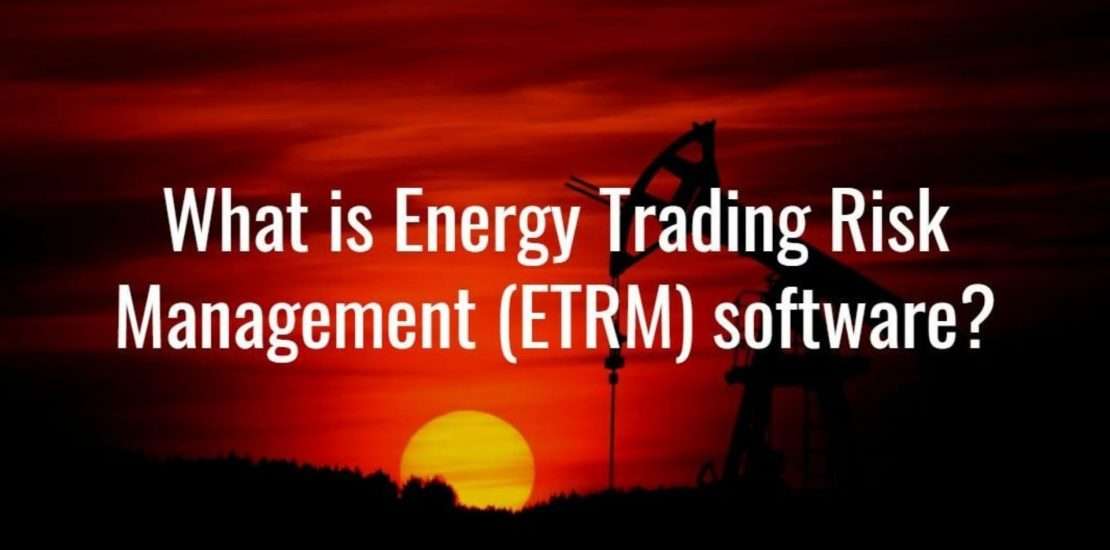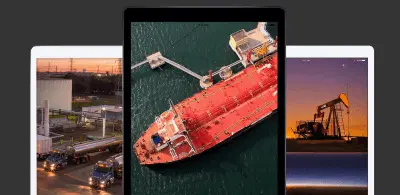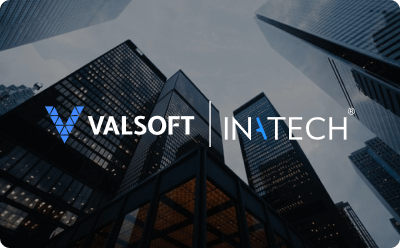What is Energy Trading Risk Management (ETRM) software? - Inatech
- February 9, 2022
- Posted by: Tom Hedge
- Blogs

Energy professionals need to move beyond legacy systems to make a cut in the competition. With tightening emission regulations, a dynamic geopolitical landscape, and uncertainties in supply and demand, risk managers, energy traders, finance personnel, and marketers are facing complex energy markets. This is where adopting an industry-specialised energy trading risk management (ETRM) solution.
In this article, we will try to answer the most critical questions related to ETRMs such as what is ETRM software. What are the benefits of implementing an ETRM? What should you consider when looking at the different solutions on the market, and much more!
What Is an ETRM Software?
An energy trading & risk management (etrm) is a software application that is used by oil traders, suppliers, distributors and wholesalers to automate business processes associated with the supply and trading of crude oil, refined products, alternative fuels, renewable products and financial derivatives, the movement and delivery of those energy commodities and associated risk management activities.
It primarily helps businesses assess market insights to make rapid, profitable, and data-driven decisions. Moreover, based on the energy commodity that is being traded, the features and functionalities of an ETRM may vary.
ETRM Vs. CTRM
ETRM stands for Energy Trade and Risk Management. Whereas CTRM stands for Commodity Trading and Risk Management. Although the names are used interchangeably, an energy trading risk management tools can be considered a part of CTRM.
A CTRM supports a range of trading and risk management operations for various commodities including fuels, agricultural products, metals, power, renewable energy, and others. An ETRM can, thus, be considered a specialised CTRM for energy commodities which can include crude oil, diesel, bunkers, petrochem, gasoil, base oil, jet fuel, lubricants, bitumen, distillates and even alternate fuels such as vegetable oil, used cooking oil (UCO), gasoline, ethanol blends, fatty acid methyl ester (FAME), hydrogenated vegetable oil (HVO) and many more.
What Are Different Types of ETRM
Because of their versatility and scalability, ETRM functionalities can be modified based on the industry. For instance, you can consider specialised ETRMs depending on the commodity or industry. These may include ETRM for
- Crude and refined oil products
- Natural gas liquids & nat gas
- Renewable fuels (biofuels)
- Agricultural products and livestock
- Refined fuel retail industry
- Power, and many more
Why Do You Need an ETRM Software?
Many oil traders, suppliers, distributors and wholesalers still run their commodity or oil trading businesses using manual processes including spreadsheets or outdated legacy systems. Energy trading risk management software enables operators to automate these processes so that the team can reduce mundane tasks and focus on strategic growth. With modern workflows, a smart ETRM helps you create more value and improves the efficiency of operations by streamlining trading, hedging, credit, cash flow, operations and inventory.
Energy trading risk management software assists in managing risk and operating complex integrated supply chains for crude products, distillates, petrochemicals and bunkers. It handles complex interfaces easily and effortlessly manages all front, middle and back-office needs, making it a cost-effective option for oil trading companies.
Here are some top reasons for choosing an ETRM software.
- It acts as a single integrated platform that manages front, middle, and back-office operations to help a business manage energy business efficiently.
- Based on your needs, you can have an ETRM that is either specialised to handle one energy commodity or multiple types.
- It gives a complete view of your business as well as your financial and energy portfolios.
- It avoids human errors and bias, offering more confidence to your team in making the right decisions.
- It helps you deal with today’s complex regulations and compliance that legacy systems or spreadsheets are not well-equipped to do so.
- It helps you track the complete deal lifecycle, gives you important market insights, helps control risk, and becomes quick and responsive to regulatory compliance.
- It makes communication and works management easier between your teams.
What Are the Benefits of Implementing an ETRM Software?
By implementing ETRM software, businesses can achieve the following.
- Manage market, counterparty and operational risks more effectively.
- Control operational complexity and directly impact your bottom line or profitability.
- Access a consolidated view of the business, simplifying decision-making.
- Improve profitability through trade economics, accurate pricing formulas and MTM.
- Save time so you can focus on your business by streamlining operations to drive greater efficiencies throughout your business workflow.
- Reconcile trades in real-time.
- Have a solution that works across everything from trading to invoicing.
- Drastically reduce errors from manual or double entry through automation.
ETRM software can be delivered in private or public cloud ar as multi-tenanted software. Cloud-based ETRM software offers the most cost-effective option. This means no recurring implementation costs or expensive upgrades. You also avoid cloud purchases and internal CAPEX negotiations, often saving time in getting a project approved or when securing funding.
Moreover, cloud-native ETRM software is also easily scalable, can be accessed from anywhere as long as there is a device with an internet connection, allows remote work and collaboration, is faster to implement, and will always run on the very latest software.
What Should You Consider When Choosing an ETRM Software?
To start with, make sure the software you choose works for your business and the objectives you set.
Think ‘end-to-end system’ and make sure your chosen solution includes functionality to cover all key aspects of your Energy, Trading and Risk Management activities including:
- Trade and operations (cover everything from trading, contract management and operations to credit control and delivery).
- Hedging and risk management (you want to be able to hedge, monitor, forecast and report).
- Inventory management and reconciliation (for a complete view of your inventory right across the supply chain).
- Financial accounting (think planning, control, compliance and auditing).
- Reporting (to get a complete view of your business performance).
- Integration (make sure you can integrate with third-party applications).
When evaluating a solution also think about such areas as:
- Is the software an end-to-end system?
- Does it include risk management functionality?
- Can it easily handle inventory management?
- Will it handle multi-modes of transport?
- How sophisticated is its reporting?
- How easily will it integrate with other systems?
- Is it secure and intuitive?
- How will the system grow as my business grows?
- Can it be customized?
Finally, work with a reputable partner who not only listens to your business needs but also provides a solution that matches those needs.
Final Words
At Inatech, we work with some of the world’s largest bunkering and oil trading companies. This means we have a solid understanding of the business challenges you face. With our cloud-native, intelligent solutions and a team of experts who bring unique knowledge and experience to your marketplace, you can compete in the complex energy markets.
We have developed industry-specialised trading and fuel management solutions for different players including fuel marketers, renewable fuel traders, c-store operators and retailers, and many more! To discover the power of ETRM software, contact us today!


